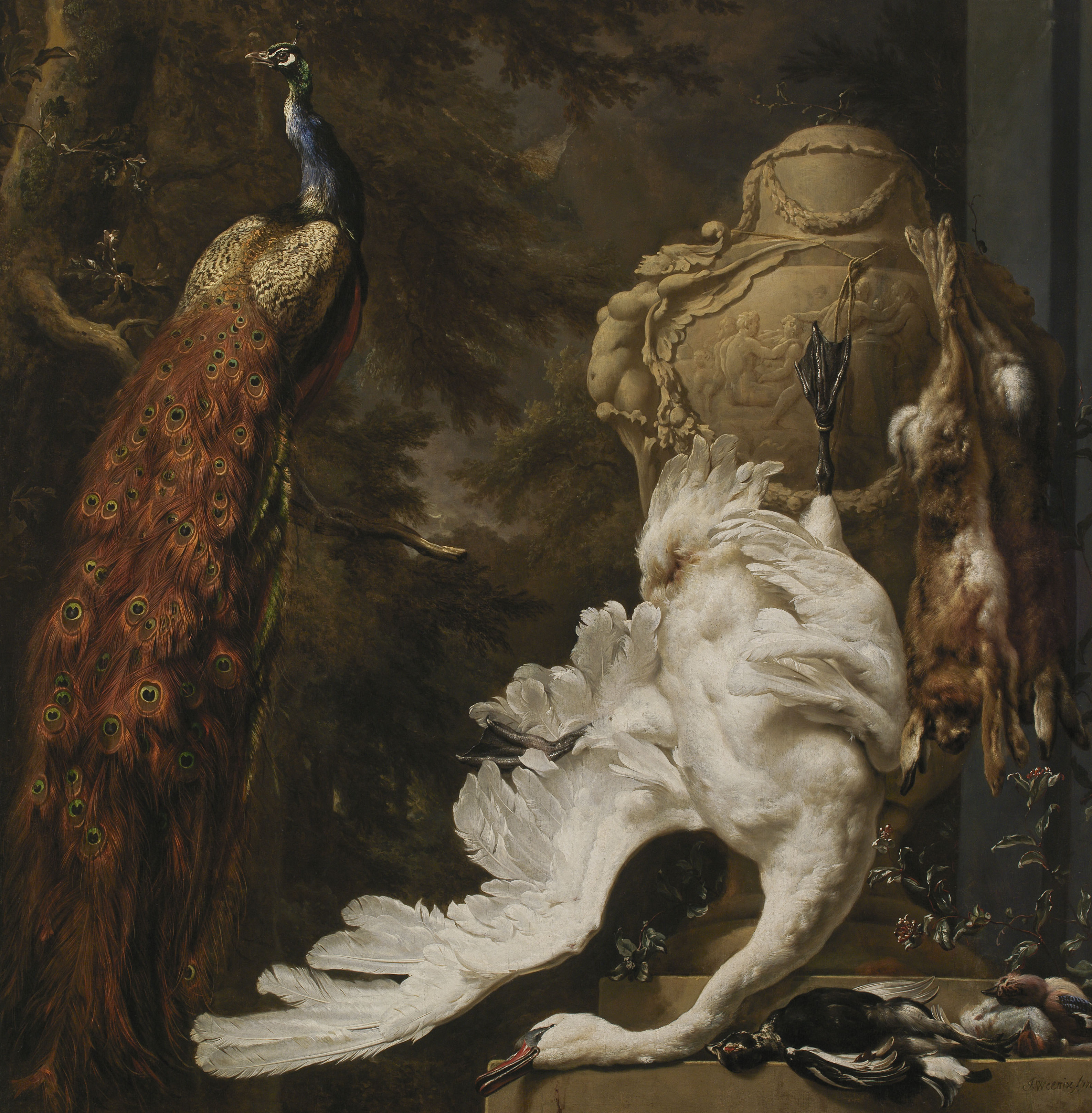
- Holland, 1708
- Oil on canvas
- Inv. 454
- Signed and dated: J. Weenix f. 1708.
Peacock and Hunting Trophies
This large composition, in the style of late 17th-century decorative paintings, depicts various hunting trophies and a peacock framed by a landscape background. The inanimate position of the swan conforms to a widely used model for works of this type, and was frequent in compositions by artists such as Frans Snyders (1579–1657). In the background stands a large urn decorated with bas-reliefs. The work dates from a period, when the artist was working on a series of twelve compositions on hunting motifs commissioned by the Palatine Elector Johann Wilhem for the Castle of Bensberg (1712–14).
The painting is similar to various other works that the artist executed in the same spirit and which were intended to illustrate the favourite pastime of the elites, such as Dead Goose and Peacock (The Wallace Collection, London), executed in 1718. The influence of his father, Jan Baptist Weenix (1621–1659), is visible here. This painting, part of a genre that was highly successful at the time in the Netherlands, reconciles the still life with the depiction of live animals, in an allusion to certain species whose hunting at the time represented the specific privilege of the nobility.
Sale Schley, Amsterdam, 6 October 1801; Cornelis Sebille Roos; Anna-Marie Hogguer-Ebeling Collection, Sale Schley, Amsterdam, 18 August 1817; Van den Berg; Capt. Alston Roberts West; Agnew Gallery, London, 6 February 1919; Duveen Brothers, 23 July 1919. Acquired by Calouste Gulbenkian, Paris, 19 October 1920.
H. 200 cm; W. 195 cm
Sampaio 2009
Luísa Sampaio, Painting in the Calouste Gulbenkian Museum. Lisbon/Milan: Calouste Gulbenkian Museum, 2009, pp. 70–1, cat. 25.
Lisbon 2010–11
In the Presence of Things. Four Centuries of European Still-Life Painting, vol. I, exhibition catalogue. Lisbon: Calouste Gulbenkian Museum, 2010, pp. 234–5, cat. 57.